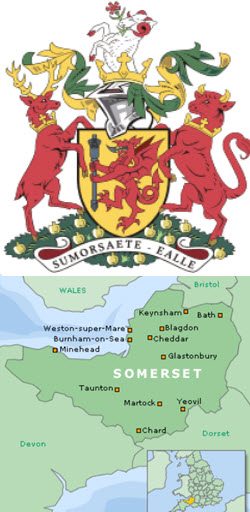Introduction to Stirling Castle
Stirling Castle, an emblem of Scottish history, stands majestically on a volcanic crag, overseeing the lush landscapes below. This iconic stronghold has been intricately involved in the tapestry of Scotland’s historical narrative, witnessing myriad significant events that have shaped the nation’s heritage. Over the centuries, it has been the site of numerous battles and sieges, each contributing to the tapestry of Scotland’s vibrant and often tumultuous history.
The Importance of Stirling Castle
The strategic significance of Stirling Castle cannot be overstated. Nestled at a point that bridges the geographical gap between the Lowlands and the Highlands, it was an essential gateway to the north, rendering it a key military stronghold. Control of Stirling Castle essentially meant control over the entrance to the entirety of Scotland, a fact that made it a frequent focal point for military action throughout history.
The Battle of Stirling Bridge (1297)
One of the most renowned historical events associated with Stirling Castle is the Battle of Stirling Bridge, which occurred in 1297. This battle was instrumental during the First War of Scottish Independence. Under the leadership of William Wallace and Andrew Moray, the Scottish forces achieved a spectacular victory over the English. The tactical use of the narrow wooden bridge turned the terrain to the Scots’ advantage. The English army, hindered by the bridge, found themselves outmaneuvered despite their numerical superiority. This victory was a major morale booster for the Scots and strengthened their resolve in the fight for independence.
The Siege of Stirling Castle (1304)
In the aftermath of the Battle of Stirling Bridge, Stirling Castle found itself at the heart of subsequent conflicts. By 1304, it faced a protracted siege that would become a crucial event in the war. This siege was led by the English King, Edward I, who applied novel siege tactics to capture the fortress. One of the standout implements of this siege was the Warwolf, an enormous trebuchet considered a marvel of medieval engineering at the time. Despite the defenders’ valiant efforts, the relentless bombardment by the English forces eventually forced the garrison to surrender. This moment marked a significant phase in Edward I’s ambitious campaign to assert dominance over Scotland.
The Battle of Bannockburn (1314)
A few years after the siege, the area surrounding Stirling Castle played host to another historic confrontation—the Battle of Bannockburn in 1314. This battle remains etched in history for Robert the Bruce’s decisive triumph over the English forces. Unlike previous conflicts involving the castle, this clash was not about besieging Stirling Castle itself. However, the victory ensured Scottish independence, greatly enhancing Robert the Bruce’s legacy. The triumph at Bannockburn solidified the Scots’ claim to autonomy and highlighted Stirling’s ongoing importance in the national narrative.
Mary Queen of Scots and Stirling Castle
Beyond its military engagements, Stirling Castle has been entwined with the fabric of Scotland’s royal history. Perhaps one of the more illustrious figures associated with the castle is Mary, Queen of Scots. The castle served as a royal residence and was the location of Mary’s coronation in 1543. Throughout her tumultuous reign, Stirling Castle stood as a symbol of royal power and authority. It was a backdrop to many significant events, representing the strength and continuity of the monarchy during a period marked by political intrigue and upheaval.
The Siege of 1651
Fast-forwarding to the mid-17th century, Stirling Castle faced yet another siege, this time amidst the Wars of the Three Kingdoms. In 1651, Oliver Cromwell’s forces sought to consolidate control in Scotland, and Stirling Castle was a strategic target. The successful capture of the castle by Cromwell’s troops marked the annexation of this historical bastion and a temporary suppression of royalist sentiments in Scotland. This siege reflects the ongoing strategic importance of Stirling Castle across various eras and conflicts.
Conclusion
The history of Stirling Castle is a reflection of Scotland’s resilience and determination. Through its storied past, marked by battles, sieges, and royal intrigues, the fortress stands today as a potent symbol of strategic and military importance. Presently, Stirling Castle is not just a testament to the Scots’ indomitable spirit; it also serves as an educational resource, offering insights into the country’s rich past. Those interested in delving deeper into the captivating history of Stirling Castle can access various resources and exhibits provided by Historic Environment Scotland, the body responsible for managing this historic site. Their efforts help ensure that the legacy of Stirling Castle continues to inspire and educate future generations about Scotland’s rich historical tapestry.



